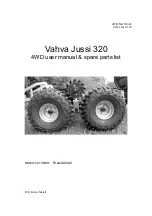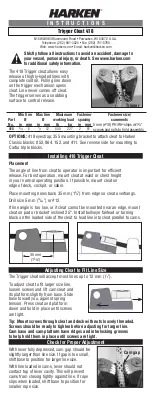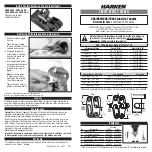
4.2-6
Savety devices
4.2-6 Paltronic 50 - crane operation stand
Display on the crane operation stand:
1
EMERGENCY OFF switch
2
Capacity utilisation indicator (60-100%)
3 On/Off
switch
4
HPLS system On/Off switch
5
OLP pushbutton / warning horn
6
Load moment limitation: slewing-angle-dependent lifting capacity control
7
Load moment limitation: 2
nd
hinged system
8
Load moment limitation: crane
9 Stop button rope winch
Start-up
The background lighting is switched on with the ignition (ON/OFF LED off).
Before starting up the Paltronic 50 you must verify that all operating levers of the control valve are in
neutral position.
The Paltronic 50 is switched on with the On/Off switch, or via the power take-
off switch (depending on connection). LED lights up green. LED flashes when
the Emergency Off valve is blocked (otherwise the LED is off).
ON / OFF
If before or while switching on an operating lever is activated all crane functions
are blocked. In order to be able to continue working the operating lever must:
- be put in neutral position.
- then by pressing the OLP button the crane functions are released.
OLP
Summary of Contents for PK 23002
Page 1: ......
Page 2: ......
Page 4: ...Inhalt ...
Page 6: ...Inhalt ...
Page 8: ...1 1 1 Overview of dangers ...
Page 16: ...1 3 6 During crane operation ...
Page 18: ...2 1 1 Checks ...
Page 20: ...2 1 1 Checks ...
Page 22: ...3 1 1 An overview of the crane ...
Page 40: ...4 1 1 During crane operation ...
Page 68: ...4 3 6 Additional equipment ...
Page 70: ...5 1 1 Ending crane operation ...
Page 80: ...5 2 1 After crane operation ...
Page 82: ...6 1 1 Maintenance ...
Page 85: ...Maintenance 6 1 3 5 8 11 12 9 4 6 5 7 16 12 4 13 1 2 3 3 W 10 18 17 11 13 15 ...
Page 94: ......
















































